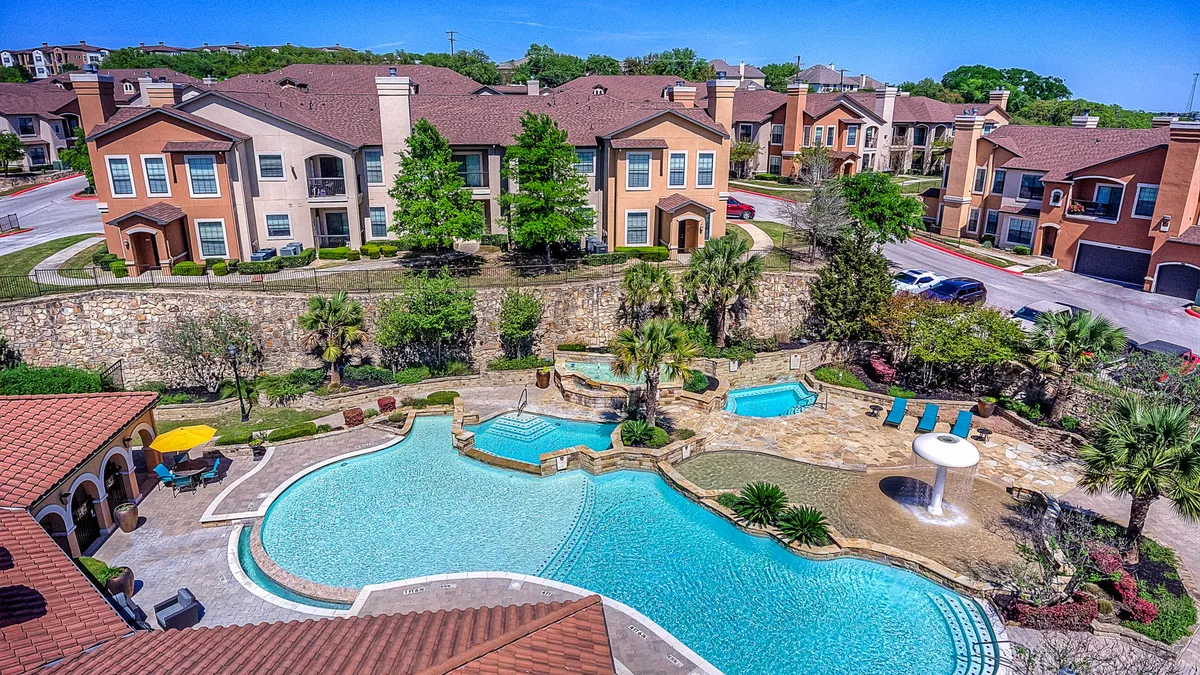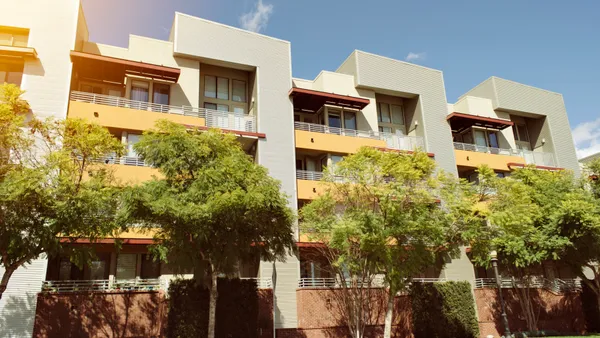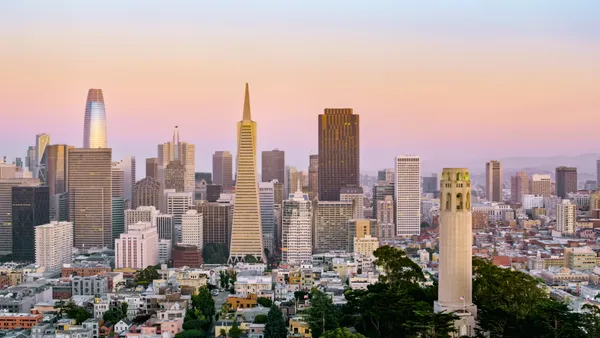For most apartment owners, it was challenging to find properties that made financial sense in 2021. But for a select few, the year provided an opportunity to keep adding to their portfolio.
Count Bob Hart, CEO and president of TruAmerica Multifamily, among the latter. In 2021, the Los Angeles-based multifamily owner bought $4 billion worth of assets, ranking it as the No. 9 buyer in the country, according to Real Capital Analytics.
After experiencing “outsized” growth in 2021, TruAmerica, the No. 35 owner in the country, will add at least another $1 billion of apartments in 2022. In many cases, the company is still finding value in a frothy market, according to Hart.
"There are always times-up situations [when an owner is forced to sell], partnerships disputes and reasons why people sell," Hart said. "And that creates opportunity."
Here, Hart talks with Multifamily Dive about the durability of the rental market, high apartment prices and why investors could be willing to accept lower returns.
This interview has been edited for brevity and clarity.
What are your top concerns right now?
Interest rates are at the top of our list of concerns. Without manageable interest rates, you have a real challenge because you have to wait for cap rates to back off.
There are no other consumer threats that I see other than the need for more wage growth. We have seen household income of the average apartment renter go up from $50,000 to $60,000 and then from $60,000 to $70,000. So wage growth has started to take off.
As interest rates rise, do you expect cap rates to back off? Or could that take some time?
I don't see them getting much lower, but I don't see them backing off just yet. It would have to be a real softening of consumer demand for that to happen.
How have your return expectations changed on new acquisitions?
Going in, cap rates are lower and the price of apartments is higher. But the price to replace them is higher. Based on rational underwriting, you have to accept the lower return.
But we're exceeding our expected returns because the growth and performance are allowing us to catch up. People that are investing in apartments know that and see that and are willing to put their money up.
So there hasn't been pushback from investors because of high prices and lower returns?
The smart investors read the market and have reset their expectations. What may have been a 15% project-level IRR [internal rate of return] two years ago is now 12% or 13%. You have to remember that cash flow accounts for more than half of that.
Even at these low cap rates, the projects are still cash flowing. So that's a part of the equation.
Unless there is something unexpected, do apartments still look like a good investment to you?
Yes. Things could change based on shocks to the system. If gas prices continue going up or there's major inflation, who knows?
What do you think is driving the strong rent increases of the past year?
I think that rents have historically been a little bit lower in suburban markets and a little bit higher in urban markets. Suburban rents are starting to catch up because of the demand caused by COVID-19.
There's still headroom left in being able to capture higher rent through renovation and marketing properties and management. People are willing to pay because they understand there is still undersupply.
So the overall economic formula for growth in multifamily is still very good in a nation that is underhoused, has smaller houses and older housing stock.
Click here to sign up to receive multifamily and apartment news like this article in your inbox every weekday.











